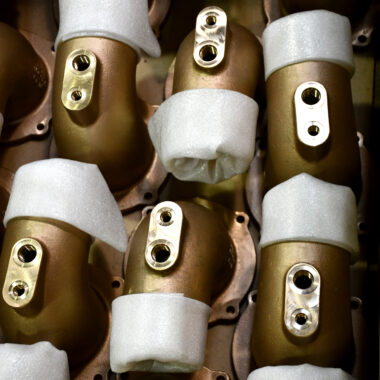Aluminum Casting Demystified: Secret Approaches for Success
Aluminum Casting Demystified: Secret Approaches for Success
Blog Article
Dive Into the World of Light Weight Aluminum Casting: Understanding the Various Approaches
Aluminum spreading is a fundamental process in the production sector, with various approaches employed to produce detailed and specific components. From the standard sand spreading technique to the advanced die spreading procedure, each method uses unique advantages depending on the requirements of the task.
Sand Spreading Method
Sand casting, a widely-used method in light weight aluminum spreading procedures, entails developing mold and mildews made of compressed sand for pouring molten metal. Once the mold and mildew is all set, it is firmly put in a flask and molten light weight aluminum is poured into the cavity.
After the steel has actually cooled down and solidified, the sand mold is broken away to disclose the light weight aluminum casting. Sand casting enables the manufacturing of intricate forms and big components that might be tough or costly to generate making use of other methods. It is also a lasting method as the sand can be recycled and made use of numerous times, minimizing waste in the casting procedure.
Long-term Mold Technique

One significant advantage of the Long-term Mold Technique is the improved dimensional accuracy it provides. The metal mold enables for tighter resistances and finer details in the final aluminum castings contrasted to sand spreading approaches. This accuracy makes it a favored option for applications where tight dimensional control is important, such as in the aerospace and automobile markets.

Pass Away Casting Process

Investment Casting Technique
Making use of a precision spreading click over here approach, Financial investment Casting Technique entails creating elaborate light weight aluminum parts by putting liquified steel into a ceramic mold and mildew. This procedure, also recognized as lost-wax spreading, begins with the development of a wax pattern of the preferred part (aluminum casting).
Investment casting is frequently utilized for producing parts in industries where complex designs and limited resistances are required, such as aerospace, automobile, and clinical tools. The flexibility and accuracy of the Financial investment Casting Strategy make it an important technique in the globe of light weight aluminum spreading.
Lost Foam Spreading Approach
Having actually discovered the intricate accuracy of Financial investment Casting Technique, the emphasis now shifts to the innovative method of Lost Foam Spreading in light weight aluminum element manufacturing. Lost Foam Casting, also recognized as evaporative pattern spreading, is a contemporary method where a foam pattern of the desired component is created and after that covered with a refractory material.
Furthermore, Lost Foam Casting is a cost-effective procedure as it reduces the requirement for cores and permits for the production of lightweight components. Despite its benefits, Lost Foam Spreading needs mindful control of the spreading procedure to avoid issues and make sure top quality parts.
Conclusion
To conclude, aluminum casting offers a variety of approaches such as sand spreading, long-term mold method, pass away casting, financial investment casting, and lost foam spreading. Each method has its own advantages and applications, making aluminum casting a flexible and extensively utilized procedure in pop over to this site various industries. Understanding the differences in between these approaches is essential in picking one of the most appropriate spreading strategy for details production requirements.
Sand casting, a widely-used method in light weight aluminum casting processes, entails producing mold and mildews made of compacted sand for pouring liquified steel. aluminum casting.The Permanent Mold And Mildew Strategy, like sand casting, is one more common method used in light weight aluminum casting procedures, providing distinct advantages in terms of mold and mildew reusability and dimensional precision. The metal mold and mildew allows for tighter tolerances and better information in the last aluminum spreadings compared to sand casting methods. The two main types of die casting are chilly chamber die spreading and hot chamber die spreading, each appropriate for different kinds of aluminum alloys.In conclusion, aluminum spreading uses a selection of methods such as sand spreading, irreversible mold and mildew strategy, die spreading, investment spreading, and lost foam spreading
Report this page